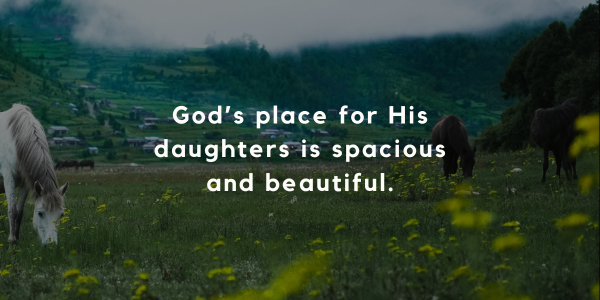Imaginate
- reallyadmin
- Jun 27, 2023
- 4 min read
Stuck in a problem? Lacy Finn Borgo suggests we engage our imagination.
Elisa

Imaginate
By Lacy Finn Borgo
In my early twenties I spent two years meeting weekly with Jeannette, as she patiently walked with me through Richard Foster’s Celebration of Discipline. The Spirit, the holy weaver, used this book and Jeannette’s faithful presence to reweave for me a deeper and more authentically true relationship with God. Little Matthew, Jeannette’s youngest son, would come with her to our weekly meetings and play outside. Matthew loved to be outside. His imagination had free rein in nature. Once when he overheard me talking with his mother about a struggle in my life, he shared a bit of wisdom.
“Lacy,” he said, with all the humility of his eight years, “you should imaginate.”
He offered me his stuffed animals and invited me to imagine possibilities beyond my rational knowing. From the lips of babes, right?
Young children use their imaginative powers for good. Often when I lead adults through an experience of using their imaginations, I hear a bit of pushback around their perceived, “Lack of imagination.” One simple question generally helps us get in touch with reality: “Do you ever worry?”
Worry and its cousin, anxiety, are products of imagination at the service of fear. But young children use their imagination in the service of wonder, curiosity, exploration, and play. They can tap into the creative goodness woven within each person to work through problems and find solutions for the future. For children, imagination is common and glorious. It is play and creativity on steroids. It is one way children embody the image of our God, who is effortless and endlessly imaginative.
We have grown blind to the ways that imagination already influences adult living. When we worry about the future or ruminate on the past, we are imagining. The stories we tell ourselves about each other and about God contain a hearty dose of imagination. Remember that imagination takes the facts of any matter and helps us know what meaning to make and how to respond.
Imagination lives in the soul. In the place where mind, body, spirit and social context unite to function—there imagination makes its bed. Love, joy, peace, patience, kindness, and gentleness all go to seed in the soul, placed by God and watered with imagination. When injustice, suffering, and sorrow find solace in the soul, God listens and then plants the kiss of imagination. Hope is born, and the peaceable kingdom inches forward.
Imagination also helps us live into the creative dimension of who we are. Creativity is the specialization of the Holy Spirit. Wasn’t it the Spirit who hovered over the void, dreaming of what this world could be? Wasn’t it the Spirit who burned like fire and blew like wind, bringing revelation and possibility for what this ancient new way of being might look like? If we want to experience the Spirit, we create. We cocreate spreadsheets and spanakopita. We cocreate community and crafts. We cocreate human beings and homes.
Creative imagination flows from the center of who we are. Imagination is how we use our minds to engage and change the world. It helps us to harness and bring into actuality human freedom and flexibility.
Imagination is essential to faith. We will not trust an unseen God without a little imagination, and we will not be able to catch a vision of the kingdom of God or participate in it without imagination. Imagination isn’t dabbling in what isn’t real; instead, it helps us to live with what is unseen. Faith, hope, and love are all made tangible with imagination.
A practice to welcome imagination: Play with problems.
Is there a circumstance, event, or person in your life that feels like a roadblock? An encounter with someone that continues to circle in your mind before you sleep or when you are doing mundane tasks? Next time this happens, shift your focus to the Spirit and ask for help. Perhaps something like, “Holy Spirit, open my imagination to solutions that I can’t see.” Then engage your imagination. Imagine the situation in your mind; drawing it on paper can help. (Stick figures are completely acceptable.) Be sure to include the Spirit in your drawing. Watch the situation like you are watching a movie from your couch. Play out the most ridiculous and funny solution possible. Embrace the fullness of the absurd, let it fill the space. Then watch it again, this time let your inner pessimist run the show. What would be the worst-case scenario? Let your shadow side and fear come into the light. Be sure to see the Spirit in the scene. What is the Spirit doing? Last, see yourself sitting with the Spirit and ask what your next faithful step is. What is the one thing you are to do next?
Adapted from Faith Like a Child by Lacy Finn Borgo. ©2023 by Lacy Finn Borgo. Used by permission of InterVarsity Press. www.ivpress.com.

Lacy Finn Borgo is the author of the recently released, Faith Like a Child. She also wrote Spiritual Conversations with Children and the children’s book All Will Be Well. She teaches and provides spiritual direction for the Renovaré Institute and the Companioning Center. She especially loves meeting with children at Haven House, a transitional facility for families without homes. Lacy holds a doctor of ministry in leadership and spiritual formation and a certificate in spiritual direction from Portland Seminary. Connect with Lacy at gooddirtministries.org






Comments